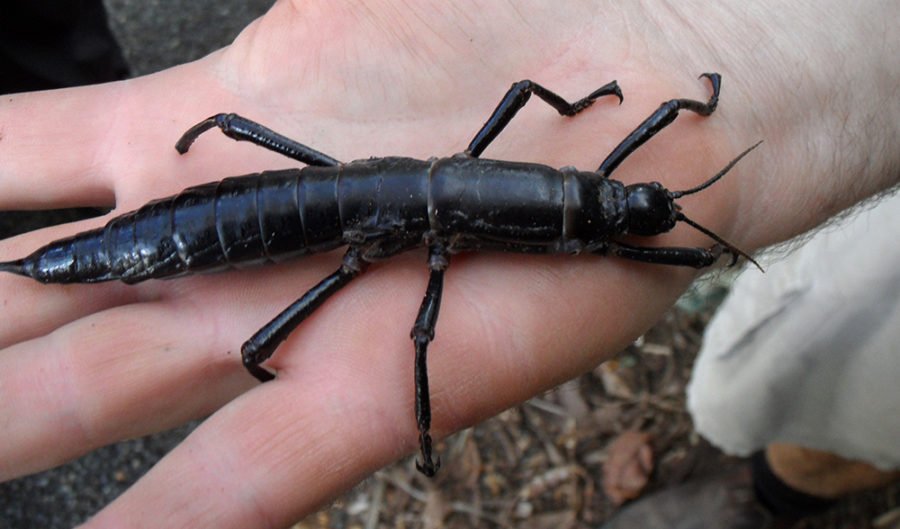Lord Howe Island stick insect

Bec Crew
Bec Crew

FOR AN INSECT to be otherwise known as a ‘land lobster’, you know it’s got to be seriously big. The Lord Howe Island stick insect (Dryococelus australis) is a flightless, nocturnal insect that stretches up to 12cm long, and weighs 8-9g.
During the 19th century, this large insect prowled Lord Howe Island in such numbers that fishermen would use them as bait.
But then mice were introduced to the island, followed by black rats in 1918, and they made such a meal of these insect that by 1920 not a single one was recorded on the island. By 1960 they were officially proclaimed extinct.
But in the late 1960s, sightings of stick insect remains were reported on Ball’s Pyramid – a volcanic remnant that sits 20km away. Said to be the tallest volcanic stack in the world, Ball’s Pyramid is about 550m high, around 300m wide andikm long. It’s so narrow that there’s no way anyone can land a boat on it.
Instead, you have to anchor your boat in the ocean, launch yourself onto the vertical pyramid wall and climb your way up. Many reckless explorers risked their lives to find a Lorde Howe Island stick insect here and bring the species back from the dead.
Bringing the phasmid back from the dead
In 2001, David Priddel and Nicholas Carlile from the NSW Government’s Office of Environment and Heritage went to Ball’s Pyramid to prove, once and for all, that the species was dead and gone.
Climbing up, they noticed Melaleuca howeana bushes growing from in a small crevice, supported by a peaty build-up of soil.
Looking inside the Melaleuca, they found what they were convinced no longer existed – a Lord Howe Island stick insect. It turned out that this one bush sustained the entire population – between 24 and 40 individuals. It gained the reputation of being the rarest insect on Earth, supported by a single bush.
Just how they made it from Lord Howe Island to the safety of Ball’s Pyramid remains a mystery, but they might have been carried over as nesting material by common noddy birds.
Eggs were brought back from Ball’s Pyramid, and Melbourne Zoo now runs a breeding program for the rediscovered insect. The long-term plan is for rodents to be eradicated from Lord Howe Island and the captive population of stick insects reintroduced, with a species of owl to keep their new population in check.
Video: A Lord Howe Island phasmid hatching – the first time its ever been filmed.

